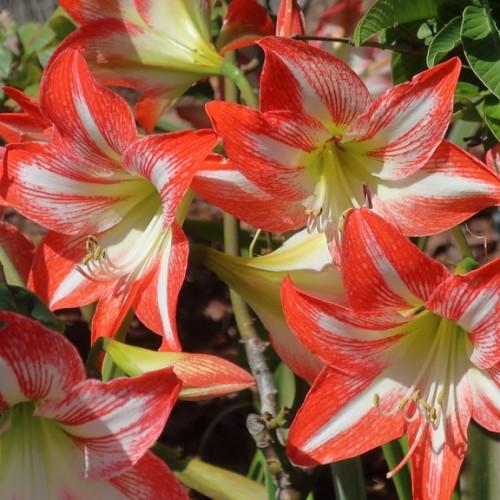
amaryllis
Hippeastrum cvs.
Cycle:
Perennial
Watering:
Average
Hardiness Zone:
7
Flowers:
Flowers In Summer
Sun:
full sun
Soil:
Bog, Humus rich
Fruits:
Fruits In Autumn Ready In
Leaf:
Yes
Growth Rate:
High
Drought Tolerant:
Yes
Salt Tolerant:
Yes
Tropical:
Yes
watering
In general, Hardy Hibiscus should be well-watered, with approximately 1 inch of water given each week during times of hot, dry weather and fewer watering during cooler, wet weather. During the summer months especially, it is important to water your Hardy Hibiscus often and deeply, giving it about 1 to 2 inches of water every few days to keep the soil evenly moist but never soggy. If the soil feels dry to the touch several inches below the surface, then it is time to water your Hardy Hibiscus again.
sunlight
Hardy hibiscus needs at least 6-8 hours of sunlight per day, but prefers full-sun conditions. If grown in partial shade, the plant will produce fewer flowers. In areas that experience very hot summers, some afternoon shade may be beneficial for the plant. It is important to find the right balance for your climate so that the hibiscus does not experience burn or other damage from intense sunlight.
pruning
When pruning Hardy Hibiscus, it is recommended that the plants be pruned in the early springtime at the start of the new blooming season. Start by removing any dead or damaged parts of the plant, such as stems that are discolored or damaged. Next, it is important to remove any stems that are crossing, or otherwise competing for light and space. Finally, for shaping purposes, shorten each stem that is longer than the others and keep the shape of the plant more rounded and symmetrical. Pruning the Hardy Hibiscus is fairly simple, but remember to always use sharp pruners to avoid any unnecessary damage to the plants. For best results, be sure to watch the plants regularly and trim them every springtime. With a little practice and patience, your Hardy Hibiscus can remain beautiful and blooming throughout the season!
